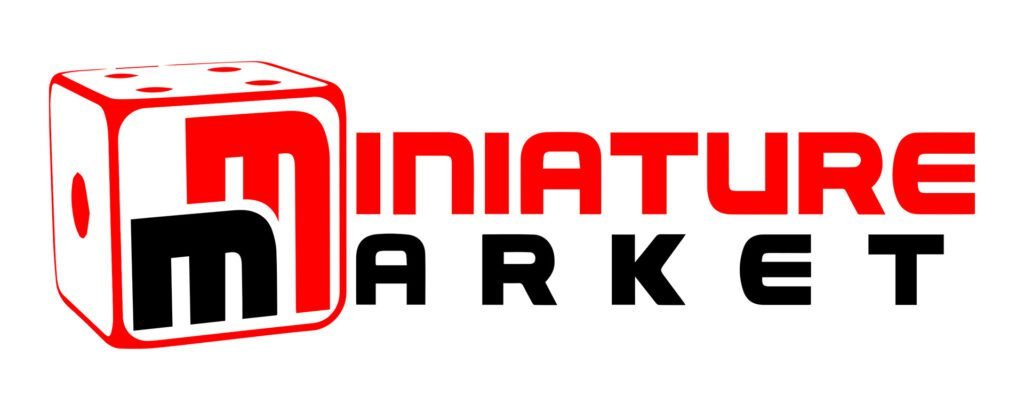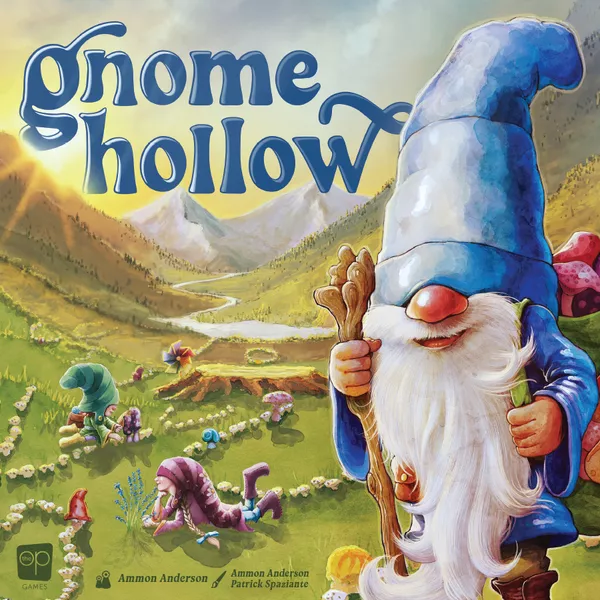
Today we’re diving into “Gnome Hollow.” This is a charming tile-placement game designed by Ammon Anderson that took the 2023 GAMA Expo by storm. It’s all about gnomes, mushrooms, & magical fairy rings, so let’s break it down – what it is, what’s good, what’s bad, & whether or not you should add it to your collection. Let’s get into it.
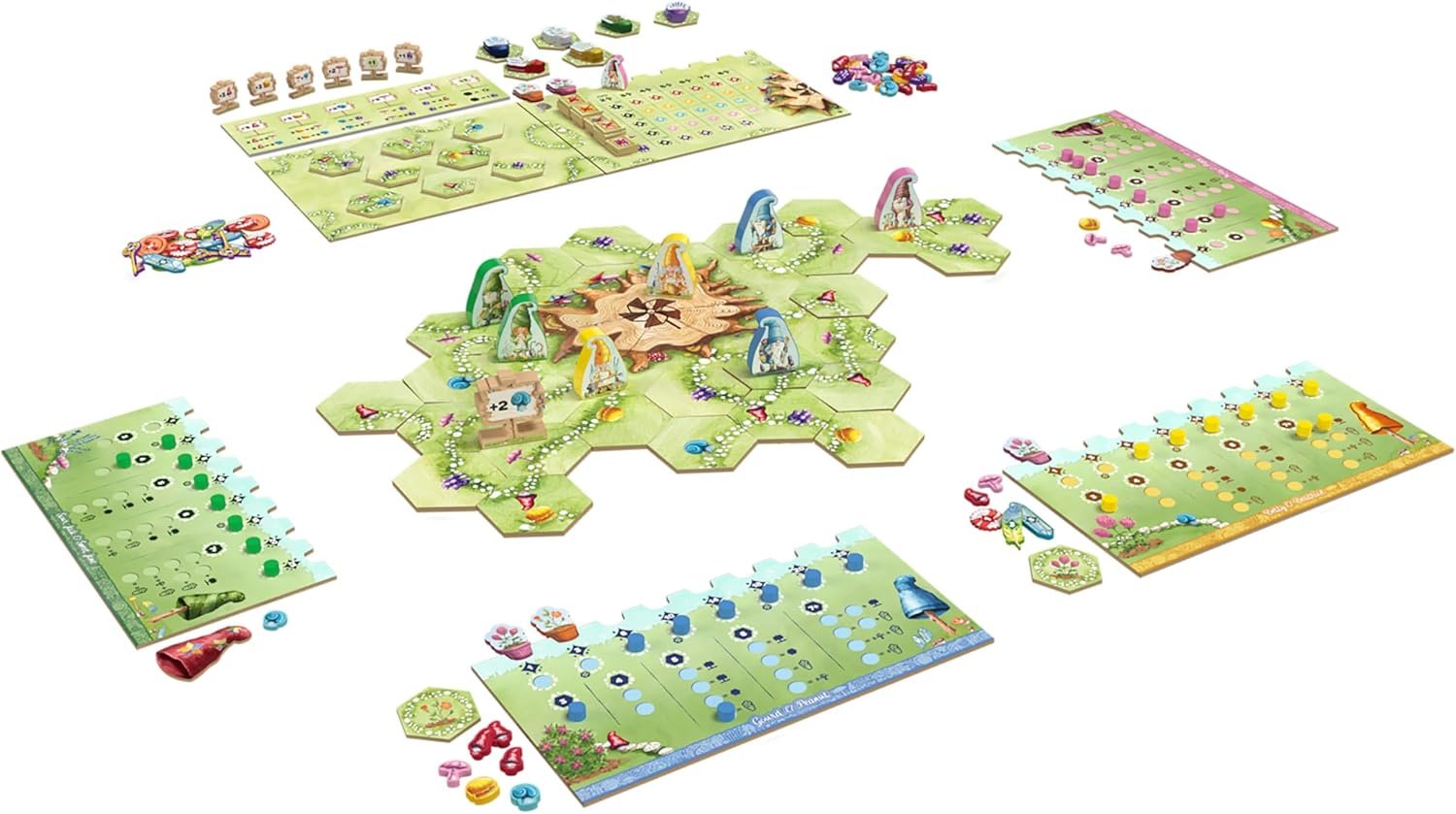
What It Is
“Gnome Hollow” is a 1-4 player game published by The Op Games with a playtime of about 45 minutes. Players take control of two gnomes & use magnetic player boards to strategically place tiles & create rings. The magnetic aspect is a unique touch, ensuring that your components stay in place throughout the game. The goal is to create rings by placing tiles around a central stump known as the pinwheel market, & your gnomes help collect mushrooms & score points.
This game strikes a balance between accessibility & strategy, making it appealing for families & more seasoned gamers alike.
Check Out These Recent Board Game Sales
- Board Game Sale: Disney Villainous 25% Off!
- Board Game Sale: Marvel: Crisis Protocol Core Set 30% Off!
- Board Game Sale: 7 Wonders Available for 17% Off!
Gameplay Overview
The game begins by arranging tiles & tokens. Each player receives a player board, two gnome figures, & eight ring markers in their chosen color. The main garden tile board is placed at the center of the play area, surrounded by a pinwheel market board, mushroom, & treasure tokens. Wildflower tiles, signposts, & other elements are set aside. Tiles are drawn from a bag to populate the garden board, with additional tiles placed in stacks for future rounds. A “Red Cap” token is given to the player who won the last game, or to a random player, to indicate the first turn.
On a player’s turn, they start by selecting & placing two tiles from the garden board into the central play area around the stump. Each side of the tiles must match, with paths connected to other paths & grass edges touching only grass. If a tile doesn’t fit, players can flip it to the reverse side to try a different configuration. After placing tiles, players check if they have created a closed loop, or ring, of mushroom paths. If a ring is formed, players collect mushroom tokens that match the mushrooms on the completed path & place a ring marker on their board, earning potential rewards.
Players can claim paths by moving their gnomes onto mushroom paths. Gnomes on claimed paths automatically collect any mushroom tokens from completed rings. If a player completes a ring claimed by another player’s gnome, that gnome’s owner gains the mushrooms & benefits on their next turn. Players earn points for completing rings, & their ring markers track their progress based on the size of the rings they complete. Larger rings grant more significant rewards, such as flowers & extra mushrooms.
Wildflower tiles serve as “wild” tiles, allowing players to place them anywhere in the garden regardless of surrounding paths. These tiles help complete difficult paths but do not count as rings themselves. When a wildflower tile is used in a ring, it connects the paths entering & exiting the tile. Players can earn Wildflower tokens by completing rings & storing them on their boards. However, only one wildflower of each type can be collected, & players must manage their storage capacity wisely.
The game includes several bonus rewards, such as additional mushrooms, extra ring markers, or flower tokens from the pinwheel market. Some rewards allow players to take an extra tile from the garden board to store for future use. Managing these bonuses efficiently is essential for maximizing points. Flowers collected are stored on the player board & contribute points at the end of the game, while mushroom tokens are used throughout to track progress.
Moving gnomes is a critical aspect of Gnome Hollow. Players can move their gnomes to claim new paths or extend existing ones. They must carefully manage gnome placement since they cannot extend a path controlled by another player without permission. Wildflower tiles can bypass this restriction, adding a layer of strategy. If two players’ gnomes are on the same path, neither can extend the path unless both agree. Gnome placement decisions can impact the outcome significantly as players vie for control of valuable paths & mushrooms.
The game continues with players taking turns placing tiles, completing rings, & scoring points. When no more tiles can be drawn, the game ends, & players tally their points. Points are earned through collected mushrooms, flowers, treasures, & completed rings. The player with the most points at the end of the game wins, proving their worth as the hardest working gnome in Gnome Hollow.
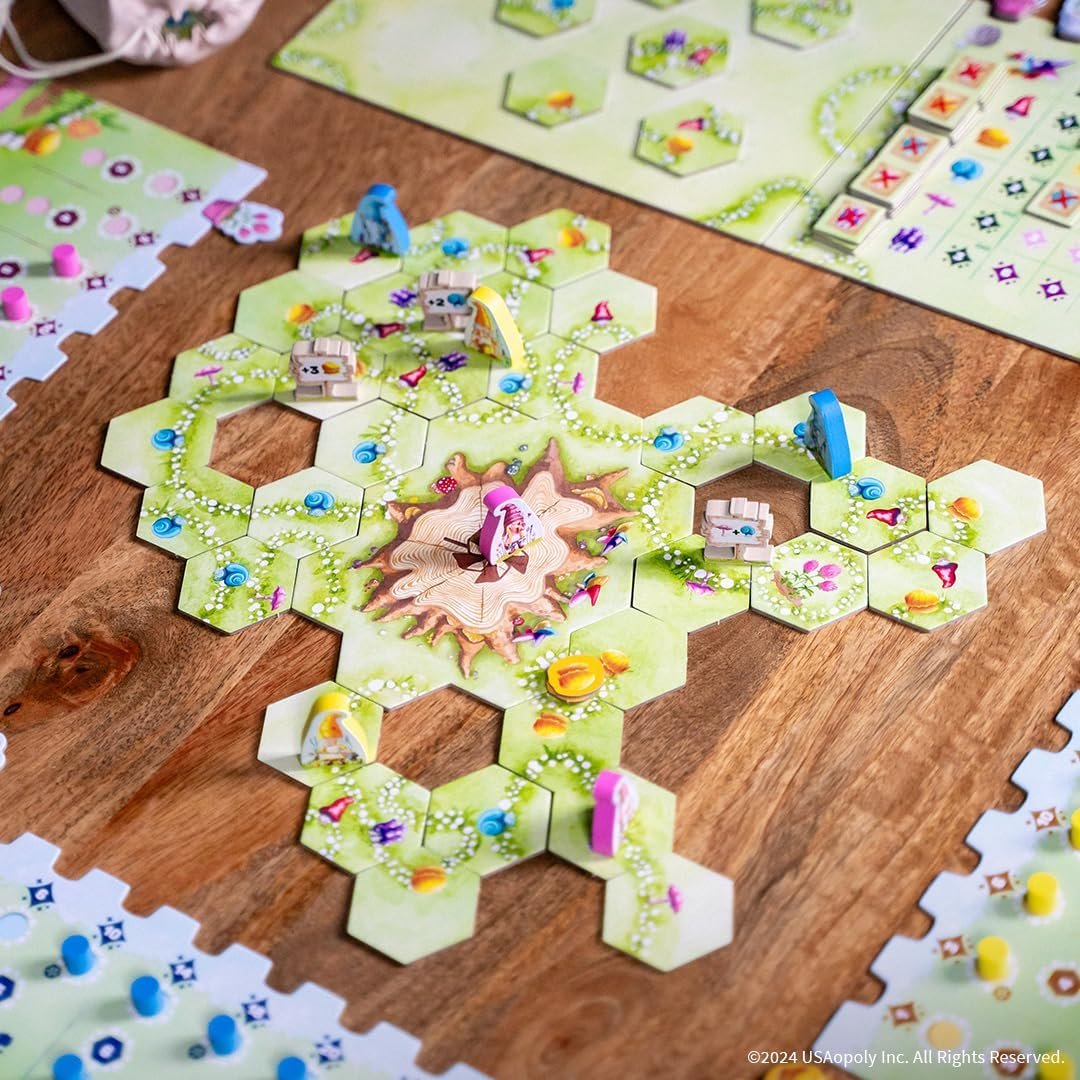
The Components
One of the standout features of “Gnome Hollow” is the magnetic player boards. Unlike typical dual-layer boards, these magnetic components keep your pieces locked in place, reducing the frustration of accidentally moving your tiles. The production quality is top-notch, with vibrant, watercolor-style art that brings the world of gnomes & fairy rings to life.
At first glance, the artwork might seem a bit simple, but once you see it in person, it’s hard not to appreciate its charm. The game also comes with beautifully illustrated tiles, adorable gnome meeples, & a variety of mushrooms & flower tokens that are just as enchanting as the gameplay itself.
The Good
Let’s talk about what “Gnome Hollow” does well. First off, the game is incredibly easy to learn. The rulebook is well-structured, with clear instructions & helpful visuals. There’s even a dedicated page showcasing the various ways to complete rings, which is perfect for new players.
The magnetic components are a game-changer. They add a tactile element that enhances the overall experience & make it easier to keep track of everything. This little touch makes a big difference, especially when compared to games that suffer from pieces sliding around.
Gnome Hollow also offers a solid blend of light strategy & casual play. Turns are quick, & the tile placement mechanic ensures that the game keeps moving. It’s the kind of game you can enjoy with your family but still find enough depth to keep more competitive players engaged. And, with the advanced mode, the game offers even more replayability.
The game’s aesthetic deserves a shout-out too. The whimsical theme, combined with the enchanting artwork, really elevates the entire experience. It might not seem like much online, but in person, it’s genuinely delightful.
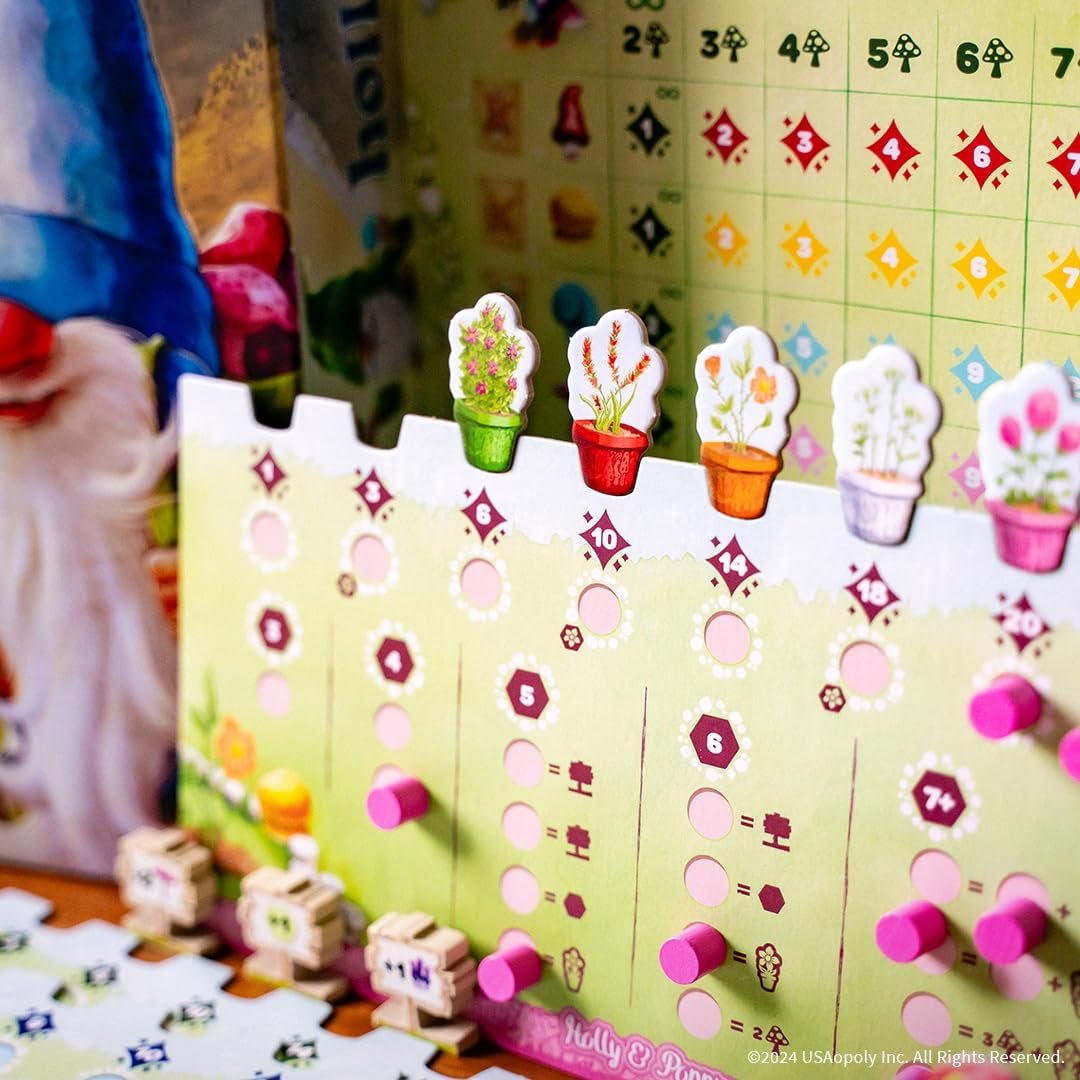
The Bad
As much as there is to love about “Gnome Hollow,” it’s not without its downsides. The main issue is that, while the game introduces several fun mechanics, it doesn’t offer much in terms of innovation. The tile placement & worker placement elements are familiar, so if you’re looking for something completely new, this might not scratch that itch.
There’s also a potential for repetitiveness after multiple plays. While the advanced mode helps with replayability, the core mechanics don’t evolve much over time, which could leave some players wanting more variety.
Lastly, even though the game works at lower player counts, it really shines with a full group of 3-4 players. The dynamic of tile placement & scoring is more engaging when there’s more competition on the board, so playing solo or with just one other person doesn’t capture the full experience.
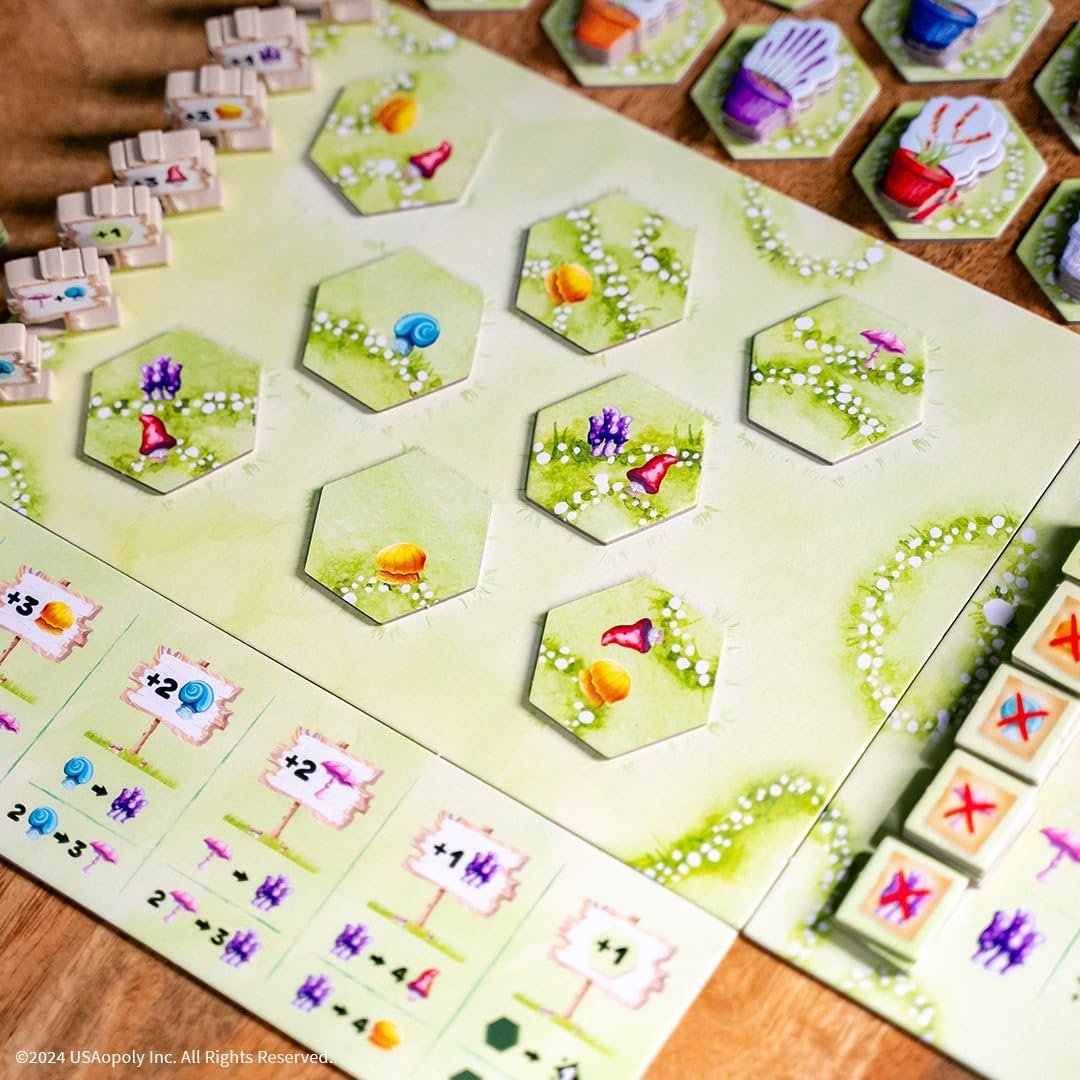
The Verdict
So, should you pick up “Gnome Hollow”? If you’re looking for a whimsical, light-strategy game that’s easy to learn but still offers strategic depth, this game is a great choice. The magnetic components, charming artwork, & fast-paced gameplay make it a perfect fit for family game nights or casual get-togethers. Plus, the advanced mode adds enough complexity to keep more experienced gamers interested.
However, if you’re after a more innovative or deeply strategic experience, “Gnome Hollow” might not fully satisfy. It’s a fun, engaging game, but it sticks pretty close to familiar mechanics without taking too many risks.
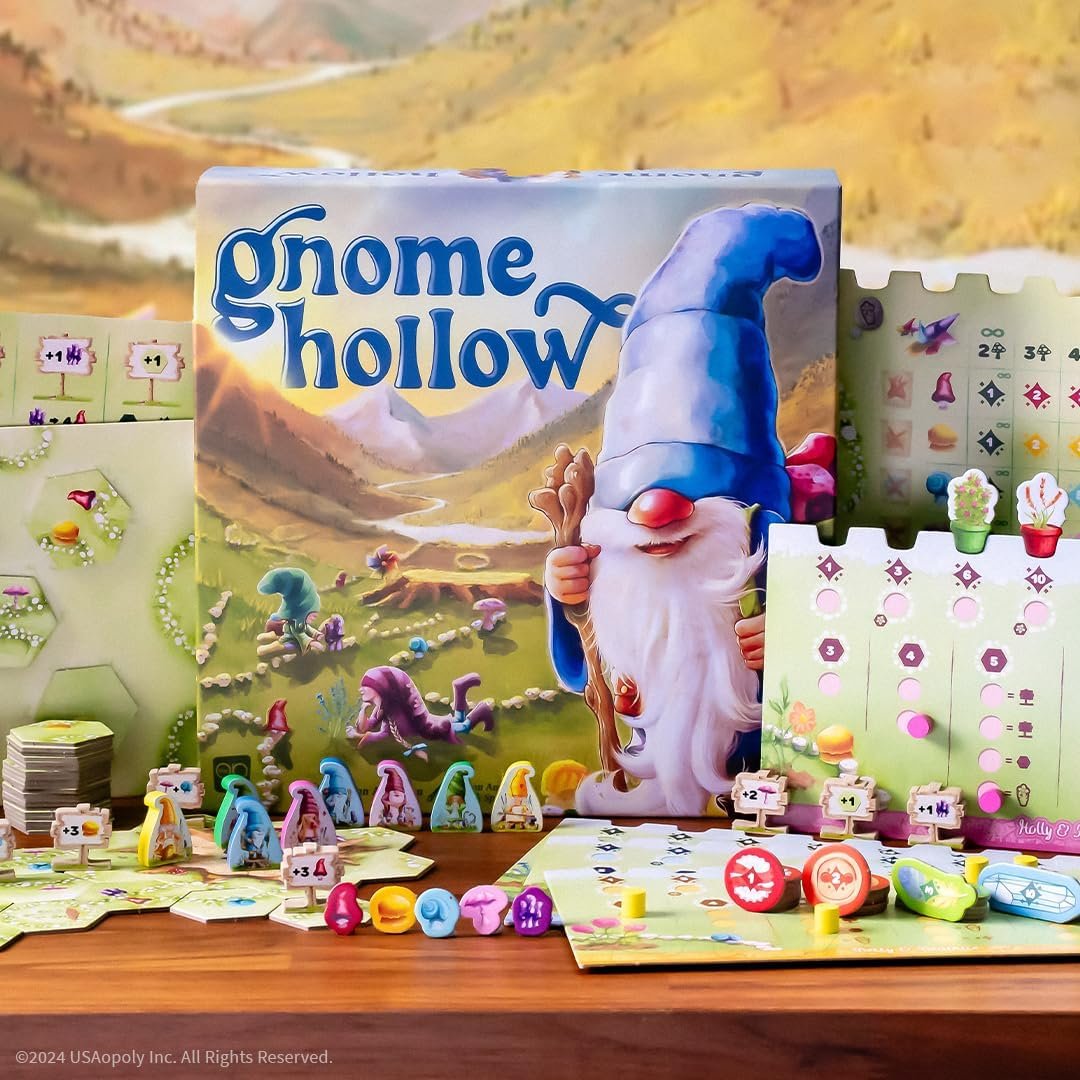
Final Thoughts
Gnome Hollow really caught me by surprise, & in a good way. The first thing that stands out is the top-notch production quality. The use of magnets to secure pieces is a brilliant touch that I’d love to see more games adopt. It eliminates the frustration of bumping the board & pieces shifting all over the place, which is especially handy in a game with so much tile placement. The upgraded wooden tokens are also a great touch if you’re looking to enhance the experience. The cardboard components are fine, but the wooden bits elevate the overall presentation.
The gameplay itself is a blend of familiar mechanics like tile placement & set collection, but it’s pulled together in a way that feels fresh. You’re placing tiles to form rings, & depending on the size & type of the rings you complete, you can score mushrooms, flowers, or other bonuses. It’s straightforward enough to pick up quickly, but there’s plenty of depth here to keep you thinking about your moves & how best to maximize your points. The signposts & bonuses for larger rings add some extra layers of strategy, which I appreciated.
One thing that really stands out is how well the game plays across different player counts. Whether you’re playing with a smaller group or a full table, the gameplay remains smooth & engaging. With more players, there’s a bit more tension as you’re competing for certain mushrooms or spaces on the board, & that keeps things exciting. The advanced variant, with its more challenging tile placement requirements, is definitely worth trying once you’ve got the basics down.
The theme & art direction are charming without being over the top. The gnome & mushroom theme works well & gives the game a whimsical feel, but it’s not so saccharine that it feels like a kids’ game. The game’s presentation is both visually appealing & practical, & the rulebook is easy to follow, which is a huge plus. I also liked the little bit of lore sprinkled in—it’s not necessary for gameplay, but it adds some personality to the world.
If there’s one small issue I have, it’s the fact that there are seven signposts but only six exchange spots. It’s not a game-breaking flaw, but it feels like a small oversight in the design. You won’t notice it too much during play, but it did make me wonder why it wasn’t addressed.
Overall, Gnome Hollow is a solid game for both casual & more strategic players. It’s the kind of game that’s easy to teach, but has enough depth to keep more experienced players engaged. The pacing is quick, the decisions are interesting, & the components really bring it all together. If you’re a fan of games like Carcassonne or enjoy a bit of light economic strategy, this one is definitely worth checking out. It’s one of those games that you’ll find yourself bringing to the table often, & for good reason.
Purchase Options


At no extra cost to you, The Board Game Site may receive revenue from affiliate and advertising partnerships for sharing this content and from purchases through links.



